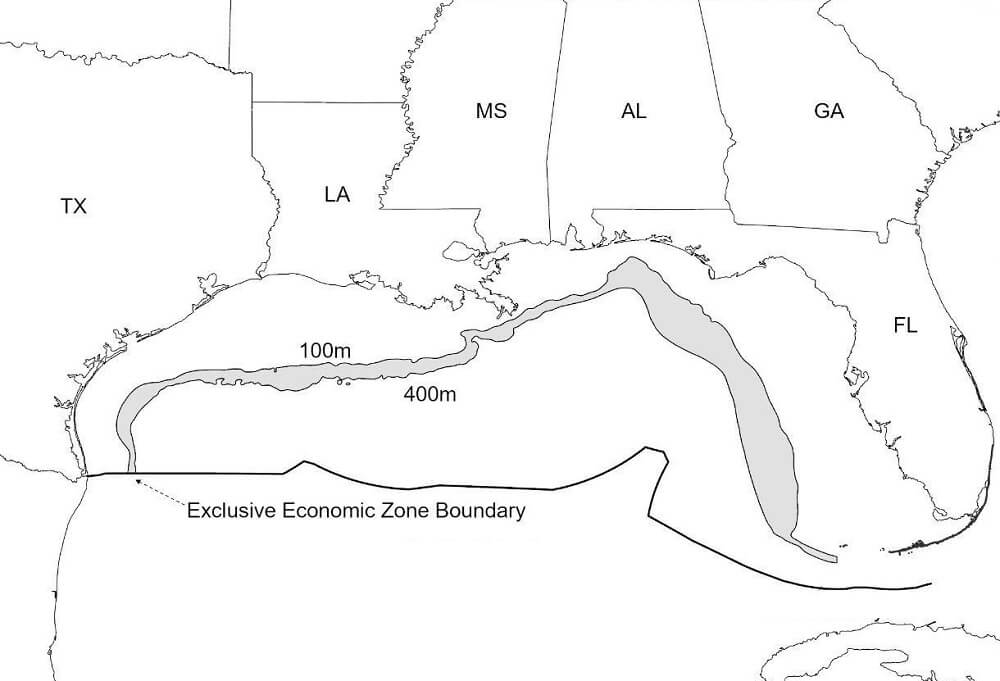Port of Mobile Warns of Economic Impact From Whale-Protection Zone

The Port of Mobile, Alabama is protesting a proposed federal rule that could impose speed limits and other restrictions on marine traffic in order to protect an endangered whale species, the newly-discovered Rice's whale. While potentially helpful for the whale, the rule will hinder shipping and oil and gas operations, according to the port and other maritime stakeholders along the Gulf Coast.
The Rice's whale is only found in the Gulf of Mexico, and it was first identified as a separate species related to the Bryde's whale in 2021. Estimates suggest that fewer than 50 individuals remain, and marine scientists and conservationists have petitioned the Biden administration to protect it and promote its recovery. Last year, more than 100 marine scientists called for "excluding leasing and other [oil and gas] activities from the whale's habitat," noting that the Rice's whale may be on track to become the first large whale species to go extinct due to human activity.
A broad range of maritime stakeholders could be affected by regulatory action to protect the species. In a recent rulemaking proposal, the National Oceanic and Atmospheric Administration laid out plans for a "critical habitat" zone between the 100 meter and 400 meter depth contours throughout the U.S. Gulf of Mexico. These contours run parallel to the coast where the shelf begins to drop off, creating a thin line along the edge of the U.S. Gulf - effectively dividing all Gulf seaports from the offshore oilpatch and the open ocean.

Proposed critical habitat area, shaded gray (NOAA, edited for clarity)
The Port of Mobile, Alabama is concerned that the rule could impede commerce.
"Any potential rulemaking should be structured so as not to impede economic development in Alabama nor hinder our nation’s economic competitiveness globally," said Maggie Oliver, spokesperson for the Port of Mobile, in a statement to the Alabama Daily News. "Federal advocacy on this issue is key to preventing a rule that, if implemented, would bring operations at the Port of Mobile to a virtual standstill and upend the delivery of consumer goods and energy resources nationwide."
NOAA has identified energy development, commercial shipping and fishing as activities that could threaten the whales' critical habitat and might require "special management or protections." The agency has previously established slowdown zones on the U.S. East Coast to protect the North Atlantic right whale, and local stakeholders are concerned that similar rules might be coming to the U.S. Gulf.
An accompanying proposal from the Bureau of Ocean Energy Management gives a preview of possible regulatory requirements. BOEM has asked offshore oil and gas operators to incorporate detailed whale-protection measures in their vessel operating plans, to include:
- having trained visual observers on board
- maintaining a 10-knot speed limit when crossing the 100-400 meter depth countours
- avoiding any nighttime transits over the protected zone
- keeping 500 meters away from whales
- keeping additional records of vessel movements
- putting AIS transcievers on all support vessels of 65 feet or larger
While BOEM's detailed limits are only for OSVs and other vessels on charter to rig operators - the vessels within BOEM's regulatory reach - Alabama's maritime community and congressional delegation are watching closely.
"This unwarranted federal action will greatly inhibit supply chains, freight transportation and economic activity in my state and across the entire Gulf," said Sen. Tommy Tuberville (R-AL) in a statement. "I am greatly concerned that the reduced speeds and prevention of transiting Gulf waters at night will continue expanding to additional areas . . . [which] would substantially disrupt economic prosperity, tourism, transportation and our national defense."
The Rice's whale is the only full-time resident whale species in the Gulf, and the majory of the 180-plus documented sightings have occured in the northeastern GOM - particularly in the De Soto Canyon, in water depths of 150-400 meters. This small area off Alabama and Florida is considered the whale's core habitat, and it is already protected. Acoustic monitoring has established evidence of Rice's whale movements further west, and this is the basis for the additional protected zone.
NOAA has identified the 100-400 meter depth band as critical habitat for several reasons, food availability first among them. The Rice's whale is a filter feeder, and while marine biologists have no conclusive evidence about what it eats, they know where it goes to eat and what lives there. From tag-tracking data, researchers know that the whales make dives to 200 meters during the daytime and exhibit movements that look like foraging near the bottom. Several species of small schooling forage fish live in this particular ecosystem. At night, the whales spend most of their time near the surface.
